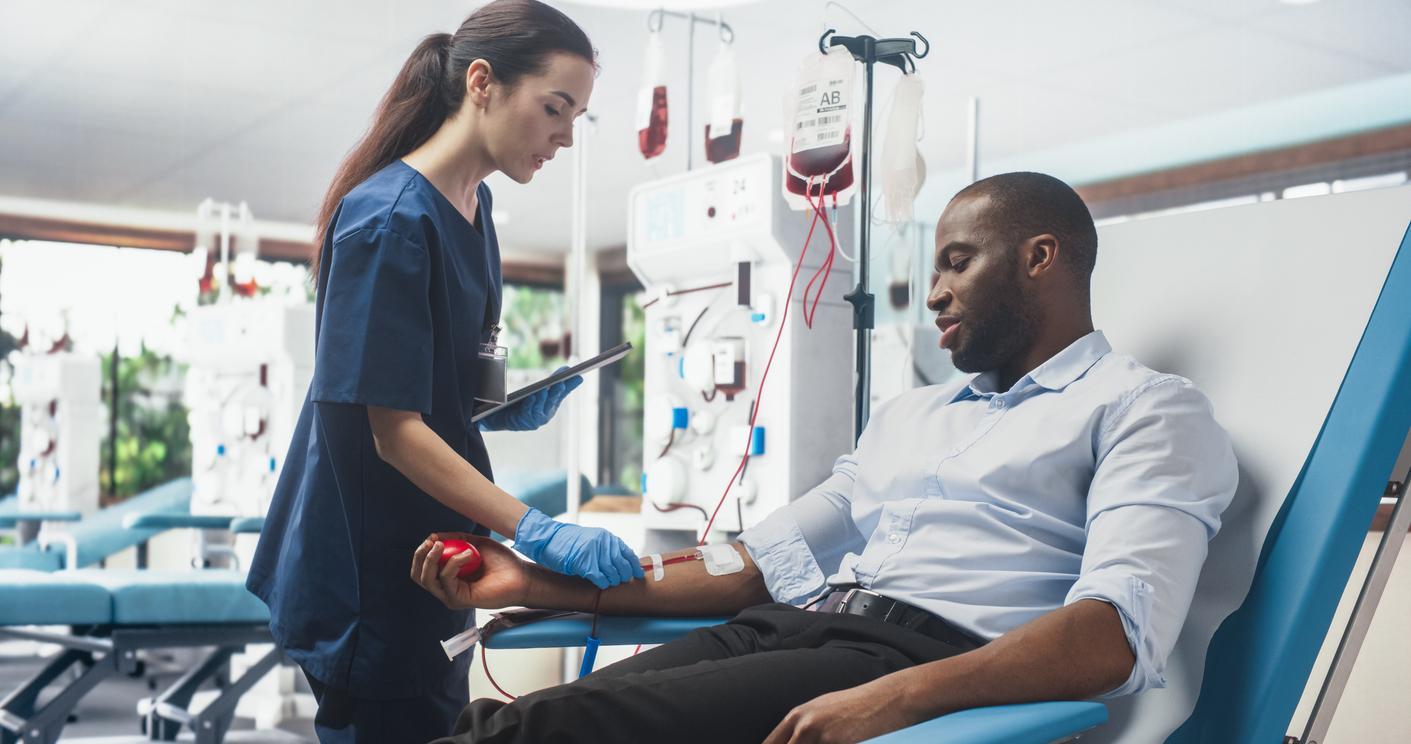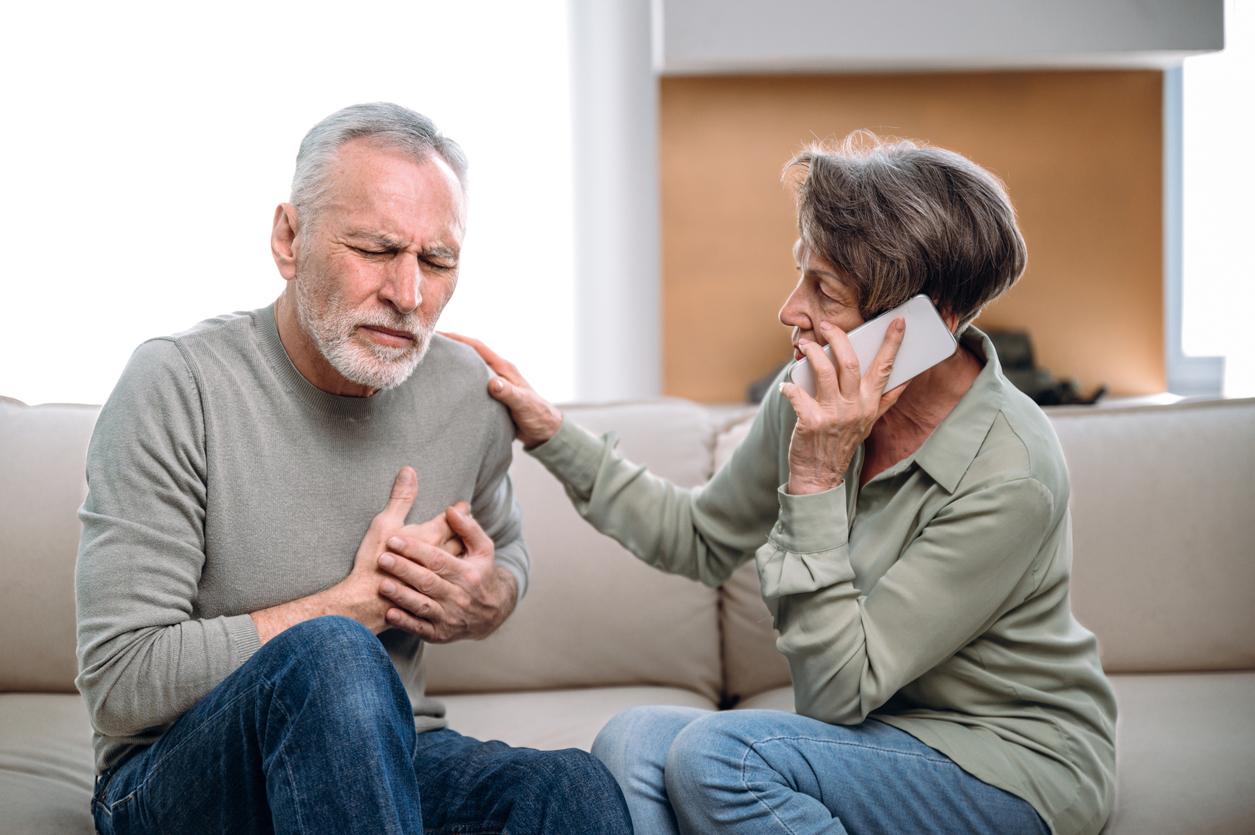Since January 1, 2022, almost all places open to the public must be equipped with defibrillators. But how can these essential devices be used to save patients suffering from cardiac or respiratory arrest? Professor Jérôme Garot, cardiologist at the Jacques Cartier hospital in Massy (Essonne), recalls the ease of use of these devices.

– Why Doctor: the list of establishments open to the public which must be equipped with it has been completed since 1er january. So there are more and more places where they are found. But what is a defibrillator for? How does it work?
Professor Jérôme Garot : An automatic external defibrillator like those installed in places that receive the public, this allows emergency intervention on an unconscious patient, who is not breathing normally, who no longer reacts to questions and who no longer has a pulse at the level of the carotids. In such circumstances, a person may be considered in a state of sudden or apparent death. To try to save her, the defibrillator must be used by someone who knows how it works. Once the electrodes have been placed on the patient, the defibrillator will work on its own, it will recognize the patient’s heartbeat and it will tell those involved if the rhythm is abnormal and shockable, in which case they must press the button which will trigger the electric shock to return the heartbeat to sinus rhythm and bring the patient back to life.
There are also fully automatic defibrillators that do the work on their own once the electrodes have been placed. With a heartbeat recognition algorithm, it will decide on its own whether or not it delivers an electric shock.
– What physical reaction does this device provoke in the patient?
This allows the patient to go from an inefficient heart rhythm, from a situation where there is no more arterial pulsation and cardiac output, to a resumption of a regular and efficient heart rhythm which will wake the patient and the come out of his state of apparent death.
– To what extent does the use of a defibrillator increase the chances of survival?
We know very well that if we leave the patient in a state of apparent death without doing anything, even if the emergency services are called -but they need time to intervene-, the chances of survival are extremely low, not exceeding 5 10% at best. And what we also know is that you have to act as quickly as possible, in the very first minutes. For every minute that passes, the chance of survival drops by 7-10% if you don’t act quickly. At the first minute, the chances are optimal, around 80% but at the 10th or 12th minute there is no chance of survival. This is why the deadline is extremely important and we must act quickly and well.
– But can everyone, without having been trained, use such a device?
Anyone can use a defibrillator! There is no need for specific training. A decree of May 2007 authorizes everyone to use this device to bring help. The problem is that people are sometimes frightened at the idea of using this type of equipment, they have never done it, and this is why upstream training is extremely important: everyone can but not everyone dares! It is for this reason that establishments that install these devices must communicate widely about where to find this device and show everyone who shares or frequents these premises that it is simple to use, that it does not have to be be afraid, that there is no risk for those who use it and that it saves lives in a very significant way!
– Concretely, what are the actions to be taken?
The first thing to do is to take the two electrodes of the defibrillator out of the pack, to stick the first under the right clavicle of the inanimate patient and the second under the left breast, a little outwards. And there, when the defibrillator has been turned on, it will guide you and you just have to follow the instructions which are very simple. With. This, you have every chance to save the life of the victim.
– Faced with an inanimate person, should using the defibrillator be the first reflex?
Faced with any inanimate person, there are three things to do: first call for help, then start an external cardiac massage on the victim flat on his back by placing both hands on the sternum and pushing hard enough with a , rate of 120 per minute, and finally set up the defibrillator as soon as possible
– Can improper use be detrimental to the patient?
No, there is no risk for the patient: the worst thing for the patient is not to use it! And anyway, when you put the electrodes on an unconscious person, if that person doesn’t need a shock, the defibrillator won’t administer it. There is therefore no risk of over-shock, of excess shock with this device.
– Today, how is training organized for the use of a defibrillator?
In National Education, there is a shift that was taken several years ago, following which young people are trained in first aid gestures. They are taught to recognize a person in a state of apparent death, cardiac massage, how to call for help and they are also given the notions of using a defibrillator.
Then, you can have “catch-up” sessions because there are many applications, often in the form of “serious games”, which allow you to train in different situations. And then there is also in the places which receive the public, in the companies, a responsibility of the leaders on the training of the personnel.
– Should these trainings be made compulsory?
This is not necessarily mandatory but it is obviously desirable, once a defibrillator is installed, that the people concerned are trained so that this device can be fully effective.
.
















